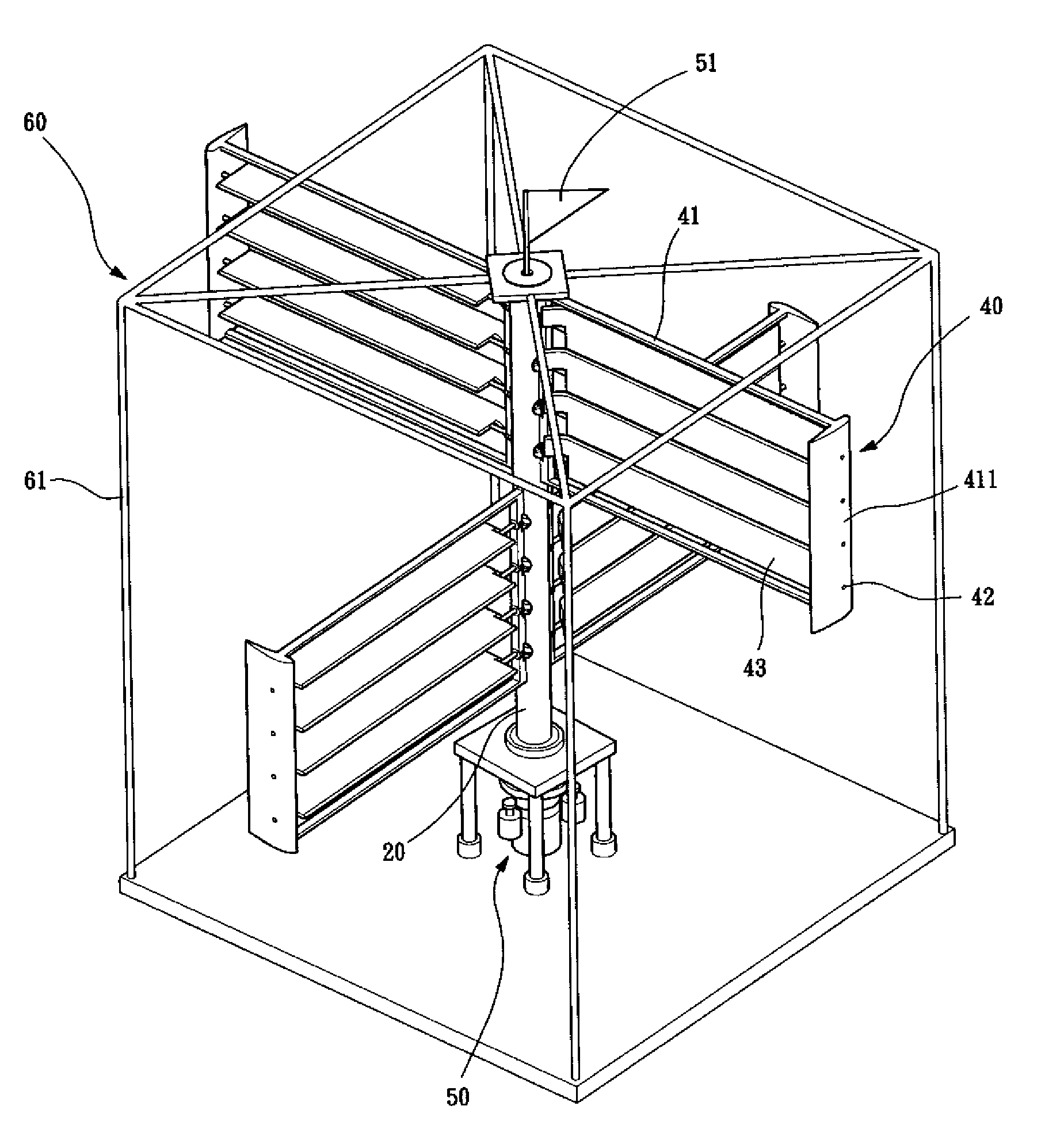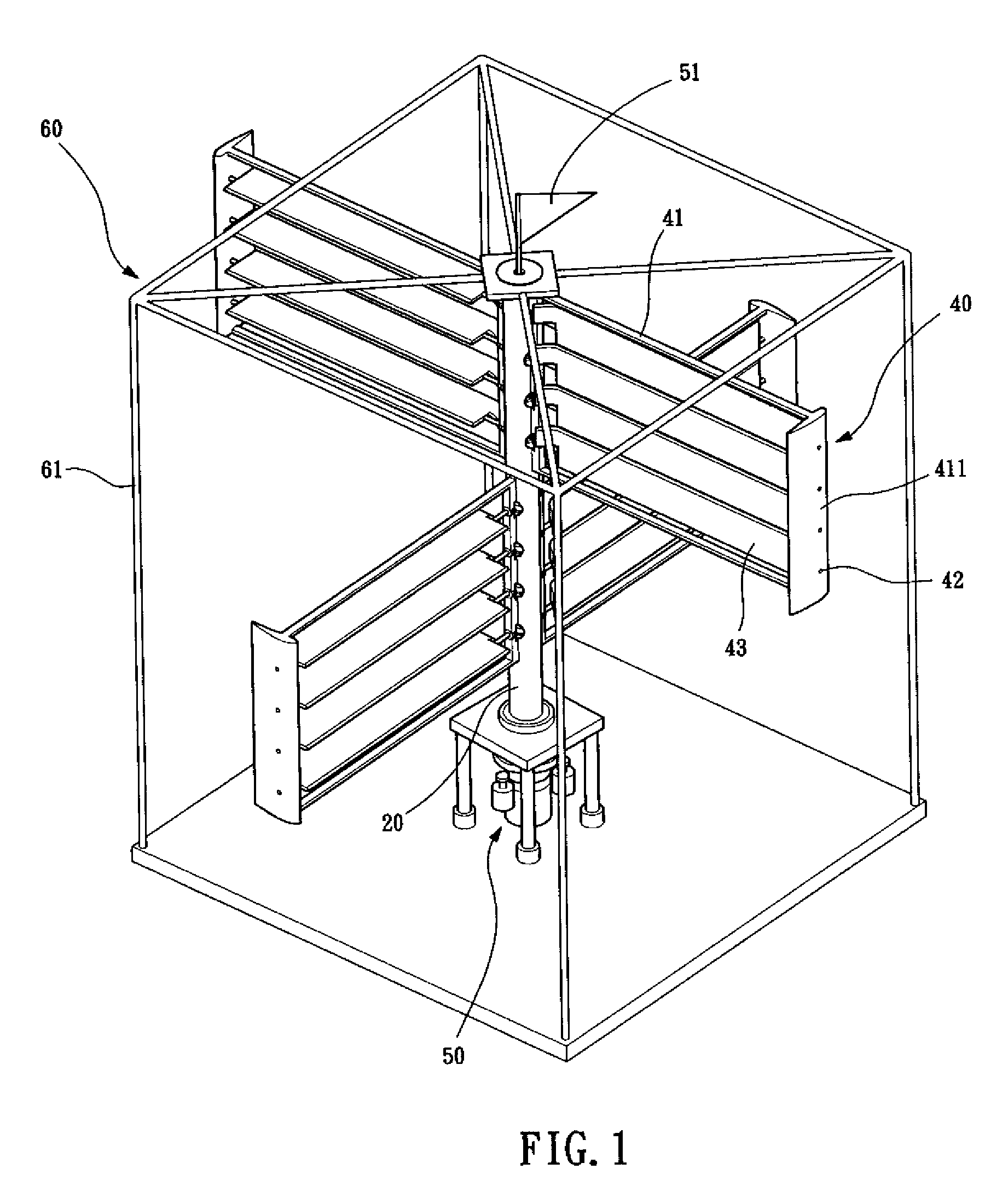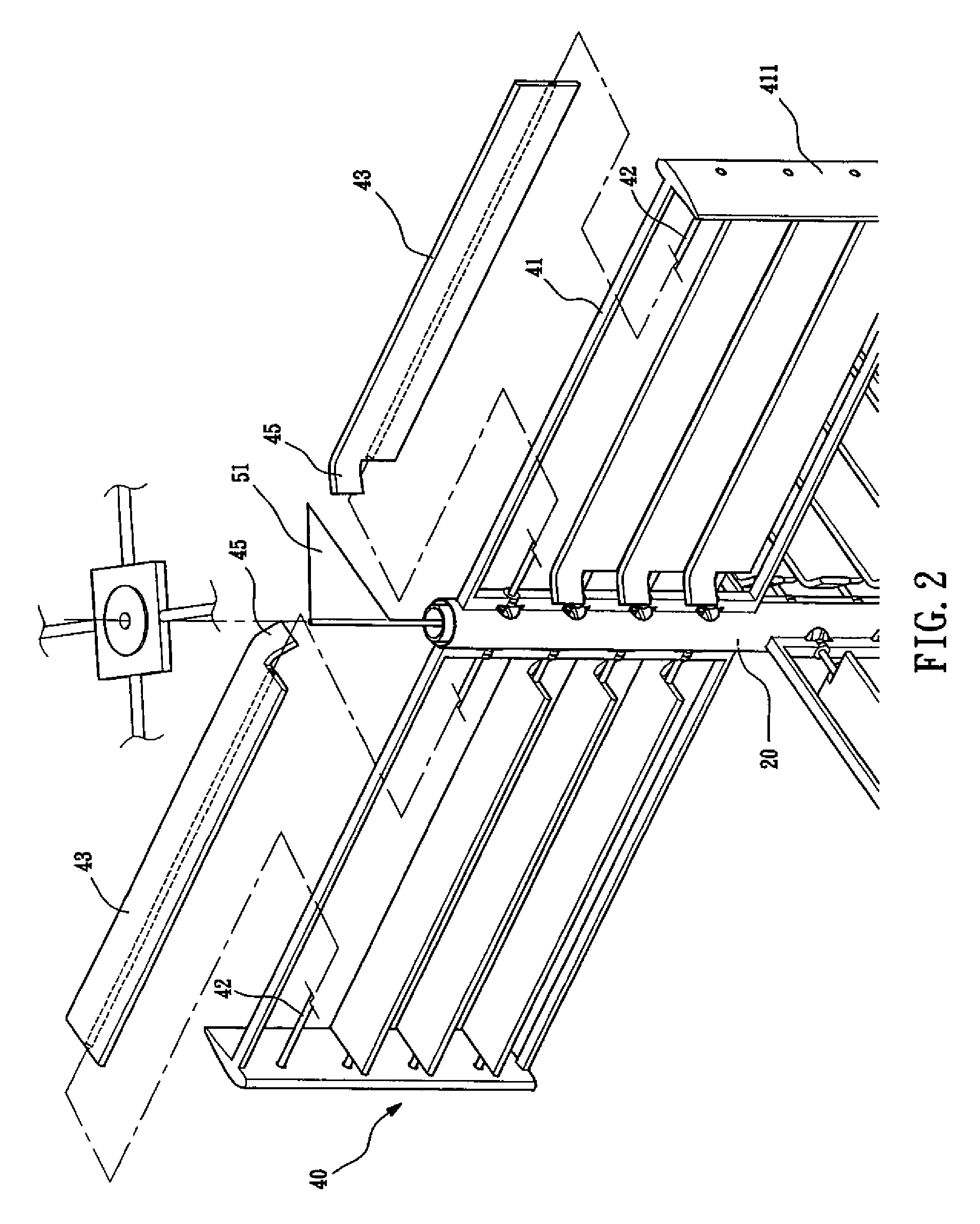Vertical axis wind turbine with wingletted cam-tiltable blades
a technology of vertical axis wind turbine and camtiltable blade, which is applied in the direction of rotors, greenhouse gas reduction, vessel construction, etc., can solve the problems of difficult maintenance, large towers, and difficult maintenance, and achieve the effect of optimum power and easy setting
- Summary
- Abstract
- Description
- Claims
- Application Information
AI Technical Summary
Benefits of technology
Problems solved by technology
Method used
Image
Examples
Embodiment Construction
[0039]The following descriptions are of exemplary embodiments only, and are not intended to limit the scope, applicability or configuration of the invention in any way. Rather, the following description provides a convenient illustration for implementing exemplary embodiments of the invention. Various changes to the described embodiments may be made in the function and arrangement of the elements described without departing from the scope of the invention as set forth in the appended claims.
[0040]With reference to the drawings and in particular to FIGS. 1-6, a vertical axis wind turbine constructed in accordance with the present invention comprises a generator 10, a shaft 20, a first cam member 31, a second cam member 32, a plurality of blade sets 40, a cam driver device 50, and a support frame 60. The blade set 40 comprises blades 43 each coupled to a crank arm 44 that is engaged to guide sections 311, 321 of the first and second cam members 31, 32. When the blades 43 are in a wind...
PUM
 Login to View More
Login to View More Abstract
Description
Claims
Application Information
 Login to View More
Login to View More - R&D
- Intellectual Property
- Life Sciences
- Materials
- Tech Scout
- Unparalleled Data Quality
- Higher Quality Content
- 60% Fewer Hallucinations
Browse by: Latest US Patents, China's latest patents, Technical Efficacy Thesaurus, Application Domain, Technology Topic, Popular Technical Reports.
© 2025 PatSnap. All rights reserved.Legal|Privacy policy|Modern Slavery Act Transparency Statement|Sitemap|About US| Contact US: help@patsnap.com



